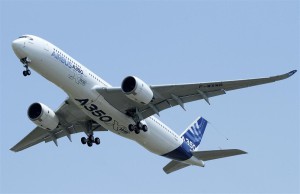 New challenges and opportunities for companies in the supply chain of aerospace industry. Airbus chief operating officer Tom Williams believes suppliers around Bristol need to push the boundaries of technology around composite materials and 3D printing. “With 3D printing we have not yet fully exploited the potential,” he said.
New challenges and opportunities for companies in the supply chain of aerospace industry. Airbus chief operating officer Tom Williams believes suppliers around Bristol need to push the boundaries of technology around composite materials and 3D printing. “With 3D printing we have not yet fully exploited the potential,” he said.
The only Brit on the board at Airbus finds it hard to envisage a completely 3D-printed plane any time soon. “Some materials such as aluminium are difficult to 3D-print,” he said. “And we use a lot of aluminium to make planes. We also need to be able to take parts off to replace them.” Tom believes the South West has a good supply chain currently. “GKN is one of our biggest suppliers and a partner and we have a great working relationship with them,” he said. “There are a lot of small and medium-sized enterprises around the Bristol area too, particularly around structure design and parts with engineering capability. We have a strong relationship with the University of Bristol too around research and technology. But there are always opportunities as technology is changing. 3D-printing is an area that is developing quickly.”
Another challenge is recruitment. Sitting at the top of the food chain, Airbus can attract the right level of talent but Tom believes it is vital for Airbus that its suppliers further down the chain can do the same. With many suppliers facing decisions about whether to invest in new premises and equipment to cope with the growing demand in civil aviation and those changing technologies, Tom offers reassurance that Airbus is committed to Filton. “In the last year we have opened new engineering and design offices at Barnwell House and Pegasus House,” he said.
It would be easy to think the aerospace industry locally is all about three or four companies. But behind Airbus, Rolls-Royce, GKN and BAE Systems, there is a supply chain made up of small and medium sized businesses.
Recruitment of experienced engineering talent is one of the challenges, according to Michelle Raven, business development director at one such firm, Stirling Dynamics in Clifton. “We work closely with Bristol, Bath and UWE universities who provide us with excellent calibre graduates,” she says. “We do like to take those bright people and train them up. But you can’t always do that, you need a mix of experience and that can be hard to find.”
The firm employs 70 people and has worked on a similar number of types of aircraft including Concorde, the Black Hawk Helicopter and the latest Airbus A350, in the past 28 years. Recently it developed the hand controls for the flight simulators used to train pilots of the F35 joint strike fighter. “Every single pilot who flies the F35 has been trained on our equipment,” says Michelle. “But now they are focusing on getting those designs manufactured and into the marketplace which means a slowdown in front-end design work.”
Established firms such as Stirling Dynamics, however, know that the aerospace world moves in cycles and the firm has found new markets exporting its services to the likes of China, South Korea and India. If firms like Stirling Dymanics are to continue to grow, however, they need to room to do so. And the kinds of space they need are different to high density offices that developers tend to reach for when looking to meet employment land requirements.



